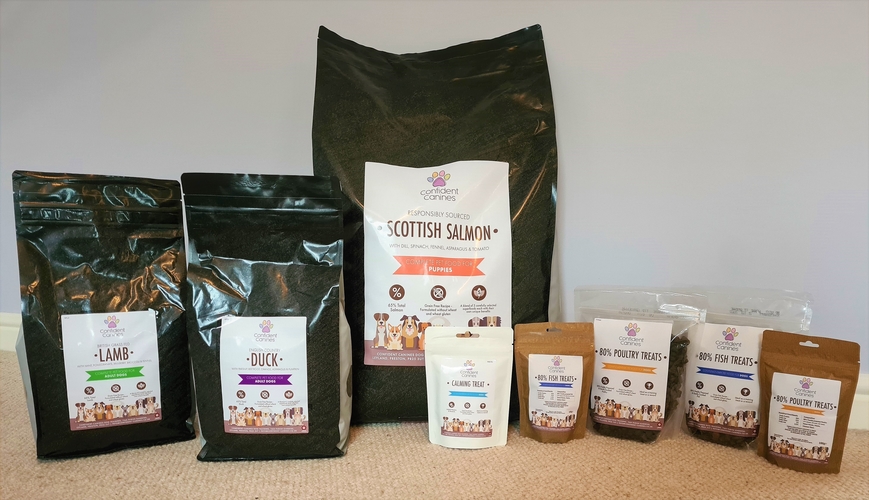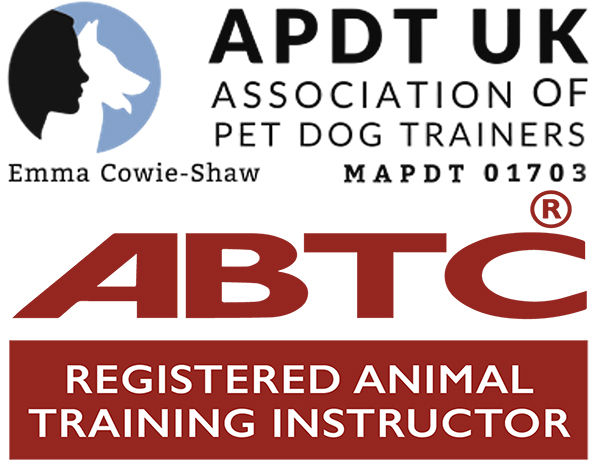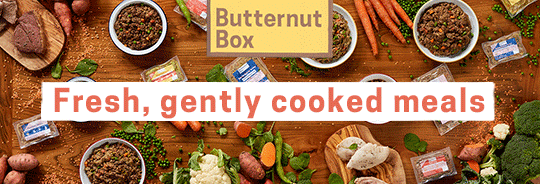WHAT SHOULD I FEED MY DOG?
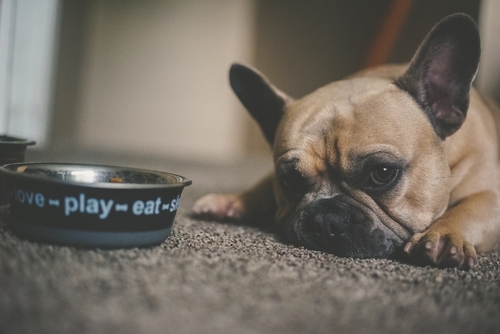
The dog food market is a minefield, causing confusion amongst many dog owners. I thought that sharing my knowledge of dog food may help some people get a little clarity.
Many people ask me the question 'What is the best food for my dog?'
The simple answer here is that it depends! There is no size fits all because all dogs are individuals, but there are plenty of factors to consider.
Some dogs are fine with grains and some aren’t. Some tolerate high protein content well and some don’t. Some dogs thrive on raw whereas others don’t. Some dogs can be fed the cheapest food in the world and thrive on it where many wouldn’t.
Other factors also come into consideration such as ease of feeding (raw or fresh takes more planning for example), and of course cost! However, some of the better-quality foods are not necessarily more expensive! We’ll explore this in a while.
The biggest thing to remember is that DIET DRIVES BEHAVIOUR. Just like with us humans, a low-quality diet or ingredients that don't agree with an individual will have a knock-on effect. For example, if you were to live on takeaways for months on end, you will likely end up feeling very lethargic, you may not sleep too well, you may have brain fog. Dogs are exactly the same! If they are getting poor nutrition, this will definitely have an effect on their energy levels, sleep quality, concentration, memory retention, and even possibly affect things like blood sugar. Some ingredients are more likely to cause gastrointestinal problems. Some are more likely to cause skin irritation in some dogs. Some may appear to cause hyperactivity! Unfortunately our dogs can't tell us if they have stomach cramps. It may not be apparent that they are occasionally itchy. It can be hard to link occasional loose poos with diet, but there is always a reason for things not being quite right.
When living with puppies who are naturally prone to loss of control (of their brains and bodies!) and spikes of arousal (think zoomies!), giving them poor quality food that has a knock-on effect with their brain function will not be helping these issues! If they are struggling to get into a regular consistent sleep routine, something as simple as them waking up because they are hungry can factor in. Especially when puppies are going through rapid growth, nutrition is super important to help their bodies develop as well as they possibly can. Getting familiar with the ingredients in your dog's food is the best thing you can do for them.
Dog Food Ingredients
Dog foods are labelled in a similar fashion to human foods with the largest quantities of ingredients being listed first and the remaining ingredients moving further down the list in descending order. A good quality dog food should have a protein source of some sort listed as the first ingredient. If you have grain at the top of the list, your dog food is primarily cereals - not good!
Dog food manufacturers started adding grains into dog food as cheap filler ingredients to keep costs down. Dogs don’t actually need grains in their diet. Their digestive systems often struggle breaking down complex carbohydrates and cereal grains. If you do want to give your dog a food with grains in, they should only make up a small portion of the overall nutritional profile.
Protein Sources
The quality of proteins in dog food can vary greatly. Many proteins in dog food only arrive there after the decent cuts of muscle meat have been removed from the animal for human consumption.
Often, the proteins in dog food are labelled in a way that we don’t understand, including terms such as ‘meat meal’ and ‘animal derivatives’.
Meat meal (e.g. chicken meal) may include residual meat, offal, connective tissues and sometimes bones. The Feeding Stuffs Regulations (2000) state that meat meal must be ‘substantially free of hooves, horn, bristle, hair and feathers as well as digestive tract content’. So you may be inadvertently feeding your dog hooves and stomach contents!
Meat and animal derivatives are another commonly listed ingredient, defined by The Feeding Stuffs Regulations (2000) as being ‘all the fleshy parts of slaughtered warm-blooded land animals fresh or preserved by appropriate treatment, and all products and derivatives of the processing of the carcase or parts of the carcase of such animals’. This is a pretty loose description! Due to the vague description, you have no idea what quality of meat is being used (hint – it probably isn’t going to be good!), or which animal it may have come from.
The better protein sources are listed as precisely what they are (e.g. fresh chicken or fresh beef).
It is becoming more and more common for dogs to have intolerances and allergies to certain food types, so if you are feeding your dog a diet with meat and animal derivatives in it, you can’t identify what protein they should potentially be avoiding. This is especially important if your dog’s digestive system doesn’t seem to be agreeing with the food.
Interesting fact: The two biggest 'red flag' proteins which are most likely to cause skin or tummy issues in dogs are chicken (number one) and beef (number two)! They can even cause more subtle problems like runny gummy eyes!
Should I feed Wet, Dry, Raw?
Most dry dog foods thesedays are ‘complete’ which means they are nutritionally balanced to give your dog everything that they need. Therefore, feeding pouches or tins of wet food in addition to dry isn’t a requirement. In fact, many wet foods can have all sorts of dubious ingredients in them! Checking out the labels is paramount.
In recent years raw feeding has become quite popular, especially with the convenient ‘complete raw’ companies starting up in business.
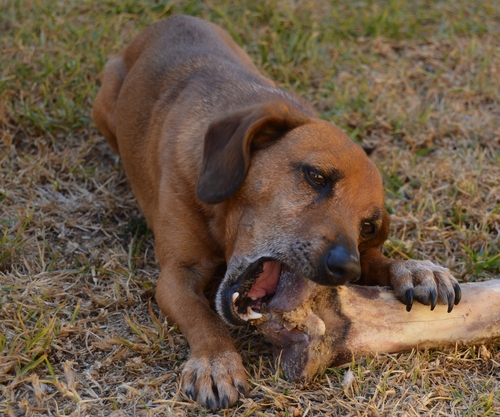
Dogs should be fed a specific ratio of ingredients on a raw diet (to include meat, offal and bone) possibly with vegetables and botanicals. If making from sctach, it can be tricky and time-consuming ensuring that the diet is fed correctly using the right ratios, and errors can cause digestive problems for your dog. For example, too much bone will make your dog constipated and this can be painful for them. Too much offal will likely cause diarrhoea.
Having the ability to use a raw food supplier who will deliver your dog’s meals in the correct ratios has made the whole process much easier. You simply order the food for delivery (it arrives frozen) and defrost each meal the night before so that it is ready to feed the following day.
I put my dog on a raw diet a few years ago and decided after a number of months that it wasn’t for us. There is definitely more organisation required (especially when going away) and I was paranoid from a hygiene perspective (she has a hairy face and everything gets lodged in there). You need adequate freezer space, and it can be tricky with some dogs getting the ratios right for the meat/bone/offal which can cause ongoing digestive issues. However, many people do choose to feed raw and their dogs do great on it!
It is important to note that (as per other types of dog food), not all raw meals are created equally. Some suppliers don't specify percentages in the nutritional breakdowns meaning that some foods may contain higher percentages of bone than others. Some suppliers aren't transparent with the protein sources or the meat quality. Always check out the labelling!
What about Fresh/Cooked?
 I personally prefer fresh/cooked to raw because I am not worrying about the raw meat aspect or trying to get the bone content right. I like the convenience of a food that is already cooked and ready to portion out, with the benefit of more nutritional value than a dried dog food and more recipe options to switch between for variety.
I personally prefer fresh/cooked to raw because I am not worrying about the raw meat aspect or trying to get the bone content right. I like the convenience of a food that is already cooked and ready to portion out, with the benefit of more nutritional value than a dried dog food and more recipe options to switch between for variety.
Our favourite fresh/cooked brand is Butternut Box. They make fresh complete meals for dogs, prepared with 60% meat and zero grains or nasties. A variety of vegetables, sweet potato and legumes make up the other 40%. The ingredients are gently cooked then packed into vaccum-sealed pouches, frozen and delivered to your door each month, proportioned to your dog's individual food requirements. You simply defrost and feed! You can even warm them slightly if you wish. They offer beef, chicken, turkey, pork, game, duck & chicken, fish, lamb and even a veggie recipe for you to choose from.
Butternut Box offers great flexibility with regards to making changes to your plan or changing how regularly you receive your orders. You can also feed half and half - especially with the climate as it currently is, feeding your dog a high quality cooked diet can be expensive! One option is to go with a 50% subscription of cooked and also feed 50% good quality dry kibble alongside.
I now feed my dog 50% dry food & 50% cooked because it is a bit more affordable yet my dog is getting the extra tasty fresh with her diet - best of both worlds!
My dog absolutely loves it, and I know that she is getting more nutritional benefit due to the ingredients being cooked at lower temperatures than the dry food, with the added benefit of a great variety of recipes.
If you would like to trial an order from Butternut Box, use this code to get 50% off your first two boxes: www.butternutbox.com/ConfidentCanines50.
Is better quality food more expensive?
Interestingly, the answer is often no when you look at the whole picture! There are a lot of big international companies that market their foods very cleverly but when you look closer, the ingredients are atrocious! You see the adverts on the telly with the dogs with long swishy coats running through meadows and surrounded by nature, and then you might look at the ingredients and realise there isn’t much natural about the food after all!
If you think about it, when the dog food manufacturers bulk up their products with cheap cereal fillers, the dog needs to eat more quantity of the food to get the nutritional benefit.
So, as an example, where a 10kg bag of cheap dog food may require you to feed your dog 200g/day, in comparison a 10kg bag of high-quality natural dog food may only require you to feed 120g/day. So, although the better quality food is more expensive to purchase in the first place, it’ll actually last longer than the cheap food and therefore the costs balance over time.
I think another thing definitely worth mentioning also is that if you are feeding your dog a lower quality food with cereal-based filler ingredients in it, your dog’s digestive system can’t process those ingredients properly. Yep, you guessed it – they will just pass straight through your dog! This means that your dog will poo much more frequently than a dog on a good quality food, and the poo will be much larger in volume (and may likely be squishy or runny if it isn’t agreeing with your dog’s digestive system)!
So how do I work out what to buy?
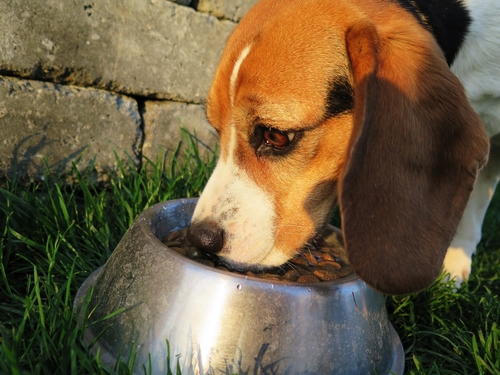
When you bring a new puppy home, check whether they are on a decent food or not. Often breeders don’t feed pups high quality dog foods (yes, there are exceptions to the rule but I am generalising here from my experience).
If you do decide to change their food, do it gradually over a period of about a week; stopping their current food and moving immediately to a new food will likely upset their tummy. Take a spoon of their old food out and replace with a spoon of their new food so that you are transitioning over gradully.
Don’t ask your vet about dog food. They don’t generally give great advice when it comes to feeding because they don’t learn about canine nutrition at vet school. They tend to offer their own opinions which is all well and good, but if their ideas are outdated and old-school then they probably aren’t giving the best advice to new puppy owners! Many vets also have contracts with specific dog food suppliers so they are effectively on commission for what they sell without necessarily understanding the low-quality nutrition of what they are recommending.
The same goes for your big pet food retailers. If you went into a Mercedes dealership and asked for their opinion on the new BMW 5 series, do you think you’d get an unbiased response? No….. Precisely. And the likes of Pets at Home don’t stock many high end dog foods. They can be purchased online easily enough though!
www.allaboutdogfood.co.uk is a fantastic resource for dog owners wanting up to date relevant information on all types of dog food. It lists pretty much every dog food brand that exists, and you can view their respective ingredients as well as seeing what rating they receive out of 100%.
The website has a great filtering tool which allows you to be as specific as you wish when applying different choices to your filter.
You can opt for grain free or all-natural ingredients for example. You can exclude certain ingredients if you wish. You can filter out foods that have the lower star ratings. And best of all, if you put in your dog’s breed and age, it will give you a cost estimate per day so that you can compare costs between the different brands. Very useful indeed!
It may surprise (or even shock!) you to look up the food you are currently feeding your dog… Food for thought indeed!
To summarise, when people ask me what is best to feed their dog I generally ask them what they would like to feed them! If they want to feed cooked, I say go for it! If they want to feed raw, I say go for it! If they want to feed dry/wet, I generally advise finding a good quality dry complete product that will do everything they want it to, without the need for the wet - unless they want to use a good quality wet food also.
Our own Premium Dog Food range
We got that fed up of the low-quality dog foods on the market that we have actually started offering our own range of premium quality dog food. Produced locally here in Lancashire, our 65% meat, grain-free recipes are made using the finest freshly prepared raw meat which is gently cooked to protect the valuable protein, with an added blend of nutritiously beneficial superfoods and no nasties!
Our specially selected recipes are formulated without grains and have added prebiotics and joint supplements to help look after your dog's health. We have a nice range of tasty recipes to choose from including chicken, salmon, duck, lamb and beef with two puppy-specific recipes especially for growing pups. Take a look HERE.
We even have our own tasty training treat range to complement the dog food range!